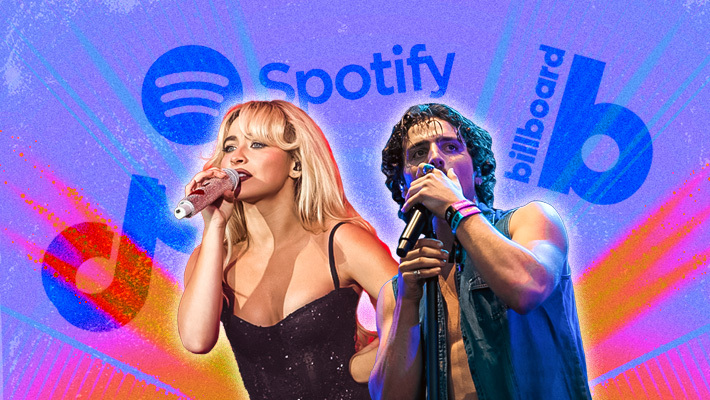
In the 1994 movie Airheads, Brendan Fraser, Steve Buscemi, and Adam Sandler play members of a rock band with big dreams. The story of the film is that the three decide to hijack a radio station in an effort to get their demo played on the air.
The idea was that fame and riches would follow, presumably. To be frank, I haven’t seen the film (sorry not sorry, my movie backlog is packed and Airheads is not above Air). I’m just aware of the general premise. Regardless, it sets up the point I’m about to get to: That movie synopsis reads as very ’90s and alien in relation to the music industry in 2024. Things are different now, both in terms of music itself and the ecosystem that surrounds it.
In times of change, it’s important to self-reflect and reconsider the things we value, what’s working and what isn’t. As I’ve aged, I’ve come to realize that one serving of vegetables per week isn’t part of a successful plan to remain alive, for example. I’ve also reached this question: Is landing a No. 1 single on the Billboard Hot 100 chart today going the way of getting a demo on the radio in 1994?
My answer, to an extent, is yes: Getting a No. 1 single doesn’t matter like it used to. That’s a big-sounding claim and I don’t want to present it without nuance, so let’s look at some information.
In 2023, 19 songs were No. 1 on the Hot 100. In 2013, that number was only 12. The figures are shaping up similarly for this year, too: We already have 15 chart-toppers so far in 2024 with so much time left, versus just 10 in 2014.
A simple lesson in supply and demand: The more there is of something, the less valuable it is. Please indulge me briefly as we go back to 1953, when Edmund Hillary and Tenzing Norgay became the first two people to summit Mount Everest. It was a big deal! Since then, over 6,000 other people have done it, too. Climbing Everest is still a noteworthy challenge, especially when you consider the 200 or so people who didn’t make it and whose bodies are still frozen on the mountain right now. But, the gravity of the feat is definitely diminished. That chilling detour was to illustrate that as the distinction of having a No. 1 single becomes less rare, it becomes less impressive.
There are some external factors that impact the perceived value of a Hot 100 No. 1, too, that have nothing to do with the Billboard charts themselves (or Mount Everest).
For one, more ways of measuring a song’s success are available to us now, and these metrics can have different significance to different audiences. For example, perhaps fans who live their musical lives on Spotify care less about chart placement and more about streaming numbers, which have increasingly come to indicate the music many people most spend their time with.
